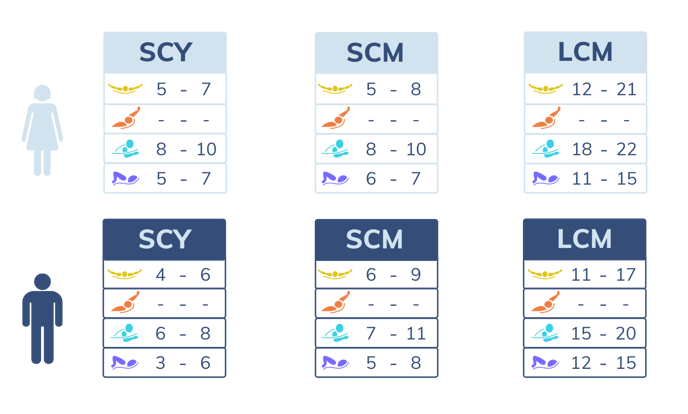Breaths
A look at how TritonWear measures breaths, what a good breath count is, and how to improve this metric.
What is Breaths?
The Breaths metric measures the number of breaths taken during each lap.
How is it measured?
Once the stroke type has been determined, the Triton 2 knows what motion to look for to identify when a breath has been taken. Each time it sees this movement, it records a breath. At the end of each length, it sends the total breath count for that lap to the device on deck to display the result.
What is a good Breath Count?
As younger swimmers age, their lung capacity increases, enabling them to hold their breath longer. So we expect to see a steady decrease in breath count through the development years of an age group competitive swimmer.
Conversely, in masters or triathlete swimming, we expect to see a slight increase in breath count as mature swimmers continue to age. Of course, we also need to keep in mind the breathing patterns more advanced swimmers choose to swim with, like breathing every 2 or every 3.
Typical Breath Ranges
Check out the chart below to see where you stack up compared to typical swimmers for your preferred stroke and pool type.
How to Improve the Breaths metric?
There is a balance to strike between oxygen deprivation and the friction created by taking a breath. The key is to improve both the breathing technique and the body’s ability to store and process lactic acid.
Start by working on techniques to reduce the friction, so being able to pull in the most oxygen per breath with the least head movement possible. At the same time, introduce or increase anaerobic work, to help the body better process lactic acid, so you can continue to swim quickly with less oxygen in your bloodstream.

